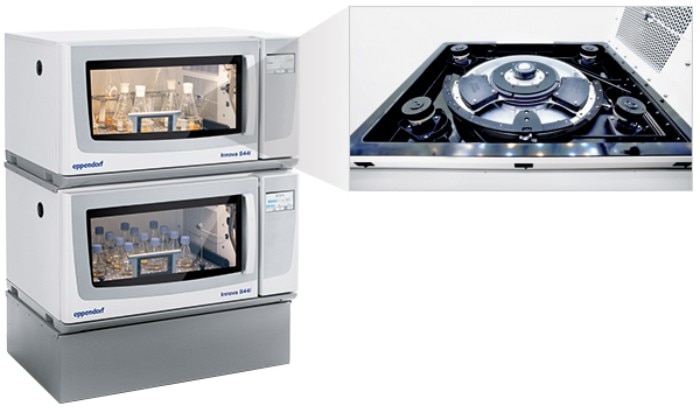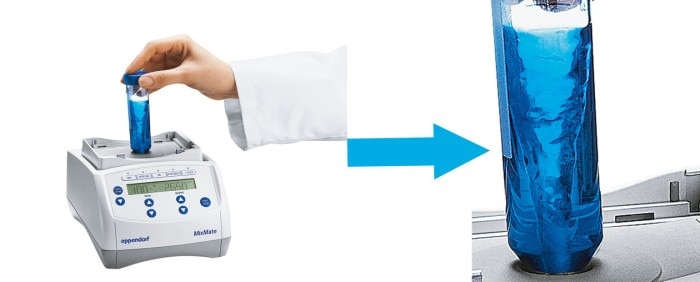MENU
IT | EUR
-
-
-
-
-
- Assistenza per bioprocessi
- Assistenza per centrifughe e rotori
- Assistenza per pipette
- Assistenza per Mastercycler
- Assistenza per l'automazione
- Assistenza per ultracongelatori
- Assistenza per incubatori
- Assistenza per agitatori
- Assistenza per la fotometria
- Assistenza per regolazione termica e miscelazione
-
-
-
-
-
- Assistenza per bioprocessi
- Assistenza per centrifughe e rotori
- Assistenza per pipette
- Assistenza per Mastercycler
- Assistenza per l'automazione
- Assistenza per ultracongelatori
- Assistenza per incubatori
- Assistenza per agitatori
- Assistenza per la fotometria
- Assistenza per regolazione termica e miscelazione
IT | EUR
Nessun risultato trovato
Cerca suggerimenti

Shaken, Not Stirred
Jan Bebermeier Lab Academy
- Miscelatori e agitatori
- Saggio
Shaker, mixer, stirrer – what is what? The “Shaken, not stirred” order at the bar is pretty well known from her majesty’s special agent, indicating that there is a difference between the different mixing methods – at least when asking for a martini. But there are also some differences in the lab regarding these methods.
Trevithick et al. decided in 1999 to perform a background check for the drink recommendation of the agencies most famous employee. The team analyzed the difference between shaken and stirred alcoholic drinks. They used martinis as starting material and measured the luminescence which is created when the hydrogen peroxide reacts with luminol bound to albumin. Based on their research, they realized that the shaking of a martini is a more effective method for deactivation of the hydrogen peroxide compared to the stirred method.
Hopefully, Trevithick used a mixer or stirrer in the lab instead of a shaker while performing the pre-analytical steps with low-volume samples.
There are different instrument classes available for the purpose of “combining different liquid-style samples within a vessel”:
Hopefully, Trevithick used a mixer or stirrer in the lab instead of a shaker while performing the pre-analytical steps with low-volume samples.
There are different instrument classes available for the purpose of “combining different liquid-style samples within a vessel”:
The shakers
Meno informazioni

A shaker is mainly dedicated for larger vessel formats like 2, 3, or 5 L flasks or for very high numbers of smaller vessels like 50 x 25 or 50 mL. Depending on the type of flask used, you can change the sample tray and the fixation systems (called clamps).
By using eccentric drives, the orbital movement of the shaker keeps the samples in a constant shaking process. The orbit range is normally between 20 and 50 mm with a few hundred rounds per minute as max. speed. The shaking can last hours, days, or even weeks. The kinetic energy is an external force towards the vessel.
Besides the shaking frequency, measured in rounds per minute and orbital range, shakers with a housing can control different further parameters like temperature, humidity, or light. Basic platform shakers without a housing are limited to the shaking process.
By using eccentric drives, the orbital movement of the shaker keeps the samples in a constant shaking process. The orbit range is normally between 20 and 50 mm with a few hundred rounds per minute as max. speed. The shaking can last hours, days, or even weeks. The kinetic energy is an external force towards the vessel.
Besides the shaking frequency, measured in rounds per minute and orbital range, shakers with a housing can control different further parameters like temperature, humidity, or light. Basic platform shakers without a housing are limited to the shaking process.
The mixers
Meno informazioni

Mixers are compact benchtop instruments to mix a smaller number of samples within the milliliter scale. This can be a 1.5 mL microtube format as well as a 50 mL conical tube format. The available number of positions for sample vessels is in general between 4 and 24 vessels, for plates for up to 384 samples/ plate. The tubes or plates are mixed within a special adapter, holder, or block on top of the mixer. As there are many different formats of tubes, vials, and plates, the block can be exchanged at most of the available mixers. The kinetic energy is an external force towards the vessel.
Especially the mixer category with temperature control have special blocks where the tubes and vials are completely enclosed by the block to enable an optimal temperature for the samples.
The mixing process itself is performed with a very limited orbit of 3-5 mm and up to a few thousands rounds per minute. In contrast to the large shaker, this small orbit enables a successful mixing of very small sample volumes like a few microliters.
A vortex creates a swirl within the vessel. This mixing is a very special one with strong shearing forces within the liquid. Not all samples are suitable for vortex mixing. A rule of thumb is, the more complex your samples structure is, the less it will like a vortex. The kinetic energy is an external force towards the vessel.
Especially the mixer category with temperature control have special blocks where the tubes and vials are completely enclosed by the block to enable an optimal temperature for the samples.
The mixing process itself is performed with a very limited orbit of 3-5 mm and up to a few thousands rounds per minute. In contrast to the large shaker, this small orbit enables a successful mixing of very small sample volumes like a few microliters.
The vortex instrument
A vortex creates a swirl within the vessel. This mixing is a very special one with strong shearing forces within the liquid. Not all samples are suitable for vortex mixing. A rule of thumb is, the more complex your samples structure is, the less it will like a vortex. The kinetic energy is an external force towards the vessel.
Meno informazioni

The stirrer
The stirrer is the only instrument where the kinetic energy is an internal force inside the vessel. An external magnetic field transfers the kinetic energy inside the vessel by using a capsuled magnet. Alternatively, a stirrer is inserted into the sample vessel like a handheld electric mixer in the kitchen. Both stirring methods are limited to a minimum sample volume of 20-50 mL and have issues when sterility is a given.The right choice for an instrument with the purpose of “combining different liquid-style samples within a vessel” strongly depends on the type of samples you will use. Small and flexible as for a mixer or heavy and on-going as for a shaker.
Reference:
Trevithick et al., Shaken, not stirred: bioanalytical study of the antioxidant activities of martinis, BMJ, 1999: 1600-2, Volume 319
Meno informazioni

